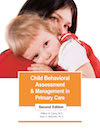
Research in temperament has blossomed in the last 15 years through the efforts of literally hundreds of scientists in many disciplines.
There are both basic and applied research programs at many of the leading universities in the US and other countries around the world. It would be impossible to name every contributor to the literature. However, there are a number of research programs that have been particularly influential in shaping our knowledge about temperament.











